This series of recordings gathered memories from local people of life in Radley up to and including the Coronation of Queen Elizabeth II in 1953. The memories are largely from the 1930s and 1940s when the village was a primarily rural community in Berkshire. At that time the main part of the village was the area now known as ‘Lower Radley’ and the parish of Radley included part of north Abingdon (down the Radley Road up to St Peter’s Road).
A total of 27 interviews were recorded in this series, mostly between 2003 and 2007. The recordings contain many fascinating details. However, please remember they are reminiscences and not verified historical facts, and so can contain inaccuracies or inconsistencies.
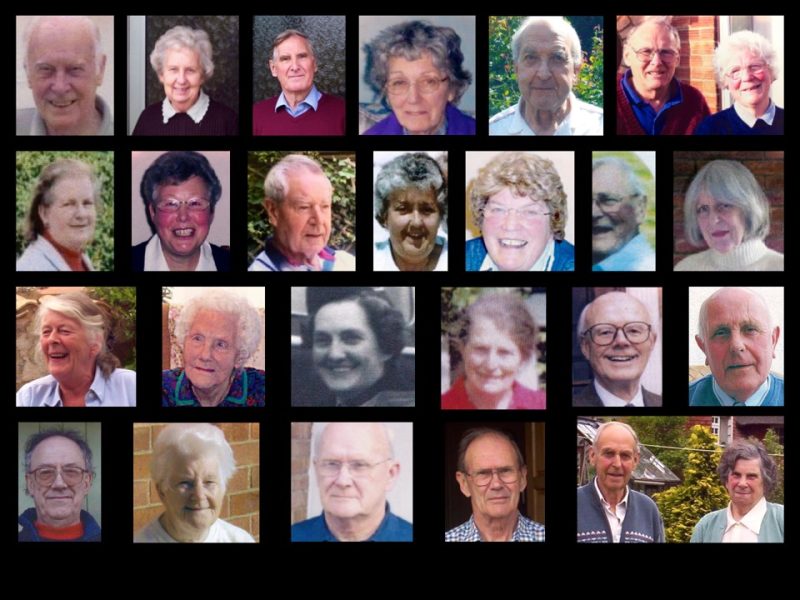
How to obtain a copy of a recording
Links to audio files of the recordings are generally available on request from the Club archivist – there’s no charge but you may be invited to make a donation to the Club. Please note that the recordings are provided solely for non-commercial research, study and private enjoyment.
Summaries of the recordings
During 2020/2021 members of the Club’s oral history group produced written summaries of each recording based on a common framework of topics (personal details, education, work travel, buildings (location and characteristics), services and pastimes, and miscellaneous). Full list of topics
The aim of the summaries is to make the material in the recordings more accessible to those looking at the history of Radley before and just after the Second World War. Links to PDFs of the individual summaries are given at the end of the short outlines of the recordings below.
The summaries have been brought together in one Excel spreadsheet containing a consolidated table of all the summaries arranged by topic and the 29 individual summaries in alphabetical order by the interviewee’s surname. The intention is to allow researchers to search for references to individual people, events or places, and/or to look at what the interviewees said about a particular framework topic.
IMPORTANT: The spreadsheet is predominantly text, with some cells in the consolidated table containing over 200 words. It needs to be viewed on a large screen (i.e. laptop or desktop computer) and users require familiarity with viewing and searching in Excel or equivalent spreadsheet software.
Use: The spreadsheet is intended to be used solely for the purposes of learning and research. Its contents should not be reproduced without permission from, and acknowledgement of, Radley History Club.
References to house numbers in Lower Radley: in the late 1930s, the local authority changed the numbering of the houses in Lower Radley from ‘x Radley’ to ‘y Lower Radley’; ‘x’ and ‘y’ were not the same. Interviewees generally use today’s number, though in a few cases, the old number is given.
List of recordings
A.60 George Badcock, interviewed in the early 1980s
George, who was probably born around 1900, lived in Abingdon in the early 1900s but spent most holidays with his grandfather at Gooseacre Farm in Radley. He talks about the farms and farmers, who lived in the various cottages and houses in the village, and the first telephones in Radley. He comments that it was only in the 1903s that things began to change in Radley. Summary of recording by topic Recording restricted to Club use only
A.39 Gilbert Bayliss, interviewed 2003
Gilbert was 12 when his family moved from Oxford to Radley in 1932 to a bungalow on Foxborough Road opposite the Bowyer Arms. He describes how at that time water was obtained from wells and sewage went to cesspits. He also talks about his time in the Special Constabulary, people who lived in the village, ghosts in Radley and the origins of the name ‘Whites Lane’. Summary of recording by topic
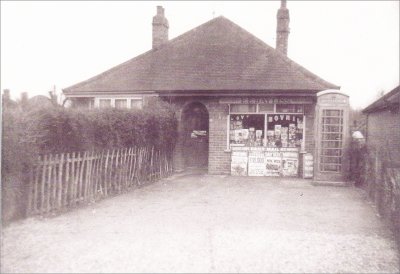
A.45 Beryl Buckle, interviewed 2003
Beryl came to live in a thatched cottage in Radley in 1927 when she was two weeks old. Like her parents and children, she attended Radley Primary School. When Beryl worked at the Oxonian Bakery on Thrupp Lane, she was known as the ‘jam tart queen’. Later she worked at Radley College for many years. Beryl married David in December 1944 at Radley Church and lived with him in Radley for the rest of her life. Summary of recording by topic
A.98 David Buckle, interviewed 2003
David, who was born in 1924, was brought up in a children’s home in south-east England. He came to Radley in 1941 as an evacuee to do farm work, living initially at Bigwood Camp. David joined the Royal Marines in early 1943. He describes the training and preparation for the D-Day landings and his time in Hamburg (then just a heap of rubble). He also went to Lübeck, the SS headquarters for northern Germany, and Kiel where he was involved in the surrender of U-boats and German warships as they came into harbour. Summary of recording by topic
A.50 Heather Calvert-Fisher, interviewed 2003
Heather was born in Oxford in 1928; her family moved into a new house in St Peter’s Road in Abingdon – then in the parish of Radley – in 1932. She describes her work as a nurse in Oxford and other places, and then as a community midwife in Abingdon. She mentions some of farms and houses in Radley, and swimming in the river. Summary of recording by topic
A.59 Denis Carter, interviewed 2007
Denis was born in Drayton in 1925 but moved to Radley in the 1930s. He recounts his memories of Radley at that time and then describes his working life for the railway, first as a cleaner of the firebox, then fireman, engine driver and finally porter. He talks about Radley Station in WW2 and relates how the blackout prevented train tickets being properly examined at journeys end; one night only 20% of tickets were found to be genuine. Summary of recording by topic Recording restricted to Club use only
A.51 Derek and Maureen Cook, interviewed 2004
Derek was born in Radley in 1935 and lived on Foxborough Road until he married Maureen in 1958; Maureen was born in 1933 in a thatched cottage in the village. Both attended Radley Primary School, which Maureen describes as very primitive with an old coke boiler that gave out fumes. Derek tells of an incident when he and his friend discovered an unexploded bomb, and talks about his time doing National Service in the army (he enjoyed being abroad). Maureen lived next door to a farm and remembers the seasons being linked to the farming year. Maureen’s sister, Rita Ford, is another interviewee in the series. Summary of recording by topic – Derek Summary of recording by topic – Maureen
A.40 Sally Cooper, interviewed 2003
Sally was born in 1937 at the old Warren Hospital in Abingdon. The family lived at Home Farm, Wick Hall, until 1944 when they moved to one of the large Victorian semis on Foxborough Road where her mother Barbara set up the Mulberry Bush School for children troubled by their wartime experience. Sally lived with her husband for a time at Spinney’s Cottage and then at Wick Hall. She remembers evacuees living with the family, American troops driving through Abingdon and watching the marriage of Princess Elizabeth and the Duke of Edinburgh in 1948 on the only television set in the village. Summary of recording by topic
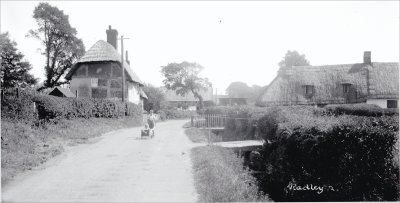
A.36 Louise Curtis, interviewed 2003
Louise (‘Lou’) was born in 1944. She lived at her grandparents’ house, Wick Hall, for the first three years of her life because her parents had been evacuated from London; the family moved to Neat Home Farm once the wartime tenants, the Locketts,* had moved out. She describes the farmhouse, her education and her working life in London and Oxford. She also mentions some of the buildings, farms and old families in Radley. Lou’s sister Jo is another of the interviewees in the series. Summary of recording by topic
* The wartime story of Sqn Leader Charles Lockett is told in the Radley History Club publication, From Radley to Colditz and Sagan.
A.53 Jenny Davie, interviewed 2004
Jenny was born in 1942 at a time her father, who served with the Eighth Army, was reported missing and didn’t know he had a daughter for several months. Jenny describes her family’s house on Whites Lane, the surrounding area, other houses in the village and their occupants, tradesmen who delivered to the village, the very few cars, attending Radley Primary School and cycling to secondary school in Abingdon. Jenny’s sister-in-law, Rita Ford, is another interviewee in the series. Summary of recording by topic
A.41 Dick Deane, interviewed 2003
Dick was born at the family farm, Chandlings Farm, in 1924. He himself farmed for many years at Park Farm before selling it to Dick Frearson in the 1960s and switching to running caravan parks to earn more money. He talks about the farms and farming in Radley, mentions various people who lived there, his wartime schooling, life in general, the bad winter of 1947, Abingdon businesses and the wartime evacuees’ caravans at Chandlings Farm. Summary of recording by topic Recording restricted to Club use only
A.42 Jean Deller, interviewed 2003
Jean’s father was born in Radley; she was born in 1934 in Essex where she grew up but made lots of visits to two great-aunts (Florrie and Edie) in Radley as a child. Her parents moved back to Radley in 1958 and Jean lived for much of her adult life in Abingdon. Her great-grandfather Charles Ambridge was stationmaster at Radley until he retired in the 1890s. Jean talks about her extended family in Radley and their recollections of life in the village. Summary of recording by topic
A.47 Rita Ford, interviewed 2003
Rita was born in 1938 in Radley in a thatched cottage where she was brought up with her two sisters and a brother. She attended Radley Primary School and Radley Church. Rita and her husband, Brian, ran Radley Road Nurseries for over 30 years. Rita was an early member of Radley History Club, is a font of knowledge on Radley and its residents in days gone by, and with Brian organised the Club’s exhibitions for many years. Fellow interviewees Maureen Cook and Jenny Davie are Rita’s sister and sister-in-law respectively. Summary of recording by topic
A.34 Dick Frearson, interviewed in 2003
Dick was born in 1926 at Lower Farm. His father was the tenant farmer there and Dick later took over from him. His interview provides a detailed account of the village in his early life: the farms, the fields and trees, the houses, the roads and the people that lived and worked there. It was a world where only two people owned cars and most people drew their drinking water from a well in a bucket; it was luxury to pump it instead. He also describes wartime experiences in the village and a more recent episode involving Charles, Diana and the royal train. Summary of recording by topic
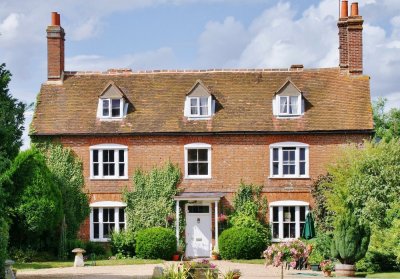
A.55 Nancy Homewood, interviewed 2004
Nancy was born in 1931 at Peach Croft Farm soon after her father Charles Taylor took over the farm tenancy. Nancy lived all her life in Radley apart from a short period as a young adult, returning in 1958 to Peach Croft when her husband John joined his father-in-law in the business. In her interview, Nancy talks about Radley and farming in the 1930s and 1940s. Summary of recording by topic
A.52 Ethel Lay, interviewed 2004
Ethel was born in 1908 in a cottage in Radley with three rooms (two up, one down). She was one of the youngest of a family of ten children; her father Frank Stimpson was a porter at Radley Station for many years. Ethel was in service until she married Jack Lay in Radley Church when she was 21. In the interview, which took place when she was 92, she describes Radley as ‘a happy place to live’. Her niece, Beryl Buckle, is another interviewee in the series. Summary of recording by topic Recording restricted to Club use only
A.58 Betty Lee, interviewed 2005
Betty was born in 1926 in Abingdon and lived in the town until she got married in 1946 when she moved with her husband to a house on the Radley Road which was then within the parish of Radley. Betty was much involved with the Brownies, Guides and Rangers all her life, setting up the Brownie Pack in Radley in 1955 with fellow resident Daphne Green. Summary of recording by topic
A.158 Don & Keith Mattingley, interviewed 2020
Don was born in 1925. He’s lived most of this life in Radley, starting with one of the terrace houses known as ‘Rose Cottages’. He talks about the house, attending Radley Primary School and then Boxhill School in Abingdon, his early working life at Pressed Steel, his time in the Home Guard and then the navy for the final months of WW2, deliveries and shops in the village, the allotments, and the Foxborough Road bungalows being built in the late 1930s. Don’s cousin Keith came to Radley around 1947/8 when he was a toddler. Keith also remembers Radley Primary School. He mentions his father as having one of the two or three first cars in Radley when he was young, their bungalow being one of the first houses in Lower Radley to have a flushing toilet, and all the children at the primary school going up to Radley College for the Coronation in 1953. Summary of recording by topic

A.35 Jo & Colin McDougall, interviewed 2003
Jo was born about 1940 and lived at Wick Hall, her grandparents’ house, until 1947 when she moved with her family to Neat’s Home Farm. She talks about Wick Hall, the farms, people who lived in the village and their jobs, the simpler pastimes of those days, and her mother making clothes (mostly out of crepe paper) for the procession up to Radley College for the Coronation celebrations. Jo’s sister Lou Curtis is another of the interviewees in the series. Jo’s husband Colin, a medical researcher specialising in leprosy, didn’t come to Radley until the 1970s. Summary of recording by topic
A.38 Tony Money (Radley College archivist), interviewed 2003
Tony attended Radley College from 1934 to 1938. He returned to teach there in 1958 and was the College archivist for many years. He talks about life at Radley College during the 1930s and the College during the war when Eastbourne College was evacuated there and the Officers Training Corps were part of the Berkshire Home Guard, patrolling Radley Park and the Thames towpath between Sandford Lock and Black Bridge (in Radley). He also mentions his research on the WW2 ‘GHQ’ defence line locally between Abingdon and Newbridge. Summary of recording by topic
A.56 Michael (Mick) Portsmouth), interviewed 2004
Mick was born in Abingdon in 1933 but moved to Radley in the 1930s, first to one of the new bungalows in New Road and then to a bungalow in Foxborough Road; his grandparents[?] lived in a cottage (now demolished) near the village school, which Mick attended. He talks about the lack of services initially at the Foxborough Road bungalows, evacuees in Radley, German planes flying over Radley to bomb Coventry, various people and tradesmen, and the Radley Feast (in September). Summary of recording by topic
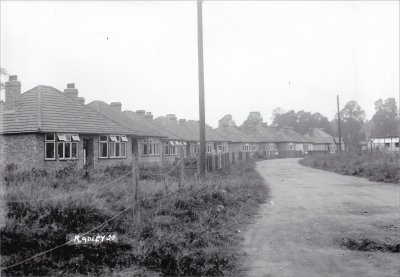
A.57 David Shaw, interviewed 2005
David, who was born in 1936, lived in a house next to the sawmill built by his father near the railway line; the sawmill site later became a caravan site and is now Lower Radley Park. He mentions some of the farms, some of the people who lived in the caravans and elsewhere in Radley, cycling to school in Abingdon, his father despatching goods from the sawmill from Radley Station, swimming in the Thames, playing the organ at Radley Church in the 1950s, wartime bombers flying over Radley and village celebrations (particularly those commemorating VE Day). Summary of recording by topic
A.44 Mary Shayler, interviewed 2003
Mary was born in Suffolk in 1923 but came as a baby to Radley where her father worked as a servitor at Radley College. During WW2 she worked at Wellworthy’s shadow factory in Abingdon making pistons for aeroplane engines. Mary and husband Reg were one of the first residents of Stonhouse Crescent. She remembers Radley before the bungalows in Foxborough Road were built, dressing up for George V’s Jubilee, Edward VIII’s abdication, planes and gliders over Abingdon on D-Day, and Selwyn Crescent being built on land that had been Badcock’s dairy farm and used by the village boys to play football. Summary of recording by topic
A.43 Brian Talboys, interviewed 2003
Brian was born in Tilehurst in 1930 but moved to Foxborough Road in Radley with his family in 1934. Brian has many memories of Radley in the 1930s and 1940s. He describes the beautiful water meadows and village people. In the 1950s, he says Radley changed as people returning from the war and from national service had become more aware of a world outside of Radley. He also talks about his work as a motor mechanic. Summary of recording by topic
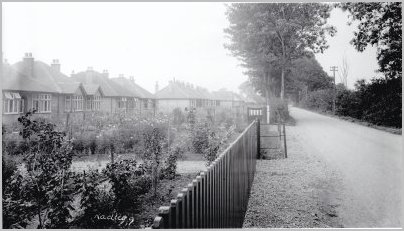
A.48 Graham Talboys, interviewed 2003
Graham came to live in Radley, in Foxborough Road, in the 1930s when he was almost eight. He recalls his time growing up in Radley, including details of the fields and buildings, evacuees arriving at the station, RAF officers from RAF Abingdon lodging with his mother (a cook and housekeeper at Radley College) and the changes to Radley after the war. Summary of recording by topic
A.37 Steve & Daisy Tubb, interviewed 2003
Steve was born 6-8 weeks premature at the Radcliffe Infirmary in Oxford in 1926 and was christened at home in Radley because the doctor was expected him to die. He talks about his work on different farms in the area, different tradesmen delivering to Radley homes, the allotments, the Coronation celebrations at Radley College and in the village, and the big changes in Radley since the Coronation. Summary of recording by topic
A.1 May Wadsworth, interviewed about 1985
May first came to Radley in 1912 when she lived close to the corner of White’s Lane and Church Road. She mentions being paid to clean the church and the school, all the cottages having wells, Foxborough Road once being just a track leaving to Thrupp Farm, White’s Lane with no houses apart from ‘Braeside’, the two cottages near the school, houses being pulled down to widen the road, council houses being built after WW1 and the names of some of the fields. Summary of recording by topic Recording restricted to Club use only